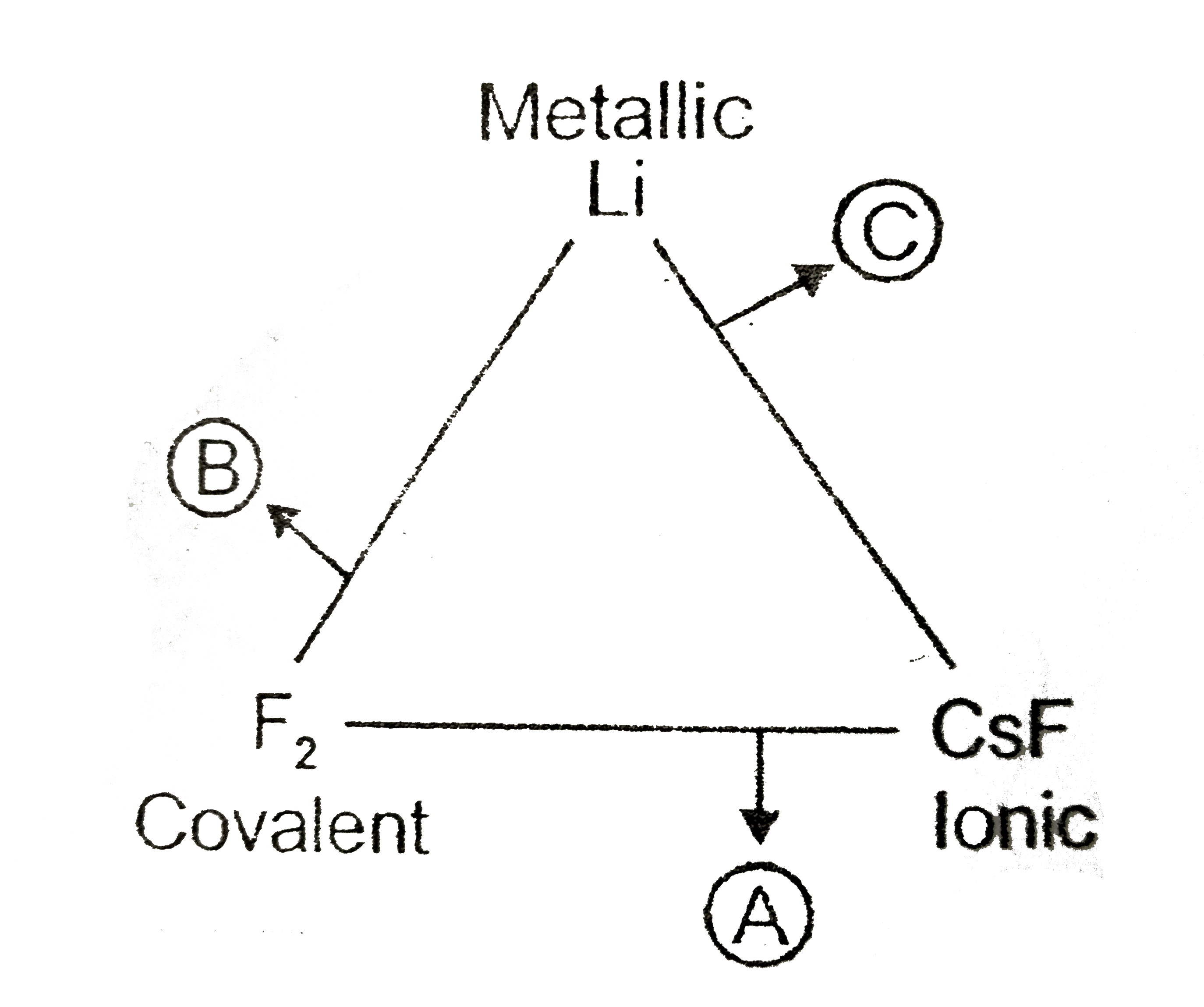The pair with more ionic nature and less m.pt. respectively in lithium halides :
LiF,LiI
LiCl,LiF
LiBr,LiI
LiF,LiCl
The correct Answer is:A
Smaller is anion lesser is its polariation by cation and thus more is ionic nature and more is m.pt. Thus LiF is more ionic having max. m.pt wherase LiF is more linic havign max,m.pt. whereaas Lil is more covalent having lowest m.pt.
Topper's Solved these Questions
- CHEMICAL BONDINGBOOK - P BAHADURCHAPTER - CHEMICAL BONDINGEXERCISE - Exercise2B
25 Videos
- CHEMICAL BONDINGBOOK - P BAHADURCHAPTER - CHEMICAL BONDINGEXERCISE - Exercise3
70 Videos
- CHEMICAL BONDINGBOOK - P BAHADURCHAPTER - CHEMICAL BONDINGEXERCISE - Exercise 7
11 Videos
- ATOMIC STRUCTUREBOOK - P BAHADURCHAPTER - ATOMIC STRUCTUREEXERCISE - Exercise 9
38 Videos
- CHEMICAL EQUILIBRIUMBOOK - P BAHADURCHAPTER - CHEMICAL EQUILIBRIUMEXERCISE - Exercise
134 Videos
Similar Questions
Copper (I) and silver (I) halides are more covalent in nature compared to sodium and potassium halides although the charges on the ions are same. How do you account for this?
View SolutionTwo substances A and B have relative permeabilities slightly greater and less than unity respectively. What is their magnetic nature?
View Solution
Knowledge Check
The pair with more ionic nature among lithium halides :-
ALiFBLiClCLiBrDLiIAlong the period, atomic/ionic radius and metallic character generally decreases, while IE, EN and nonmetallic character and oxidizing power increases.
If the ionic radius of M+ and X− are about 135 and 209 pm respectively, then the expected values of atomic radius of M and X may be respectively in pm)
(M and X are metal and non-metal, respectively of same period.)A180,90B135,209C90, 180DSame radius which is average of 135 and 209 pmAlong the period, atomic/ionic radius and metallic character generally decreases, while IE, EN and nonmetallic character and oxidizing power increases.
If the ionic radius of M+ and X− are about 135 and 209 pm respectively, then the expected values of atomic radius of M and X may be respectively in pm)
(M and X are metal and non-metal, respectively of same period.)A180,90B135,209C90, 180DSame radius which is average of 135 and 209 pm
Given below is a triangle illustrate the transition between ionic , metallic and covalent bonding

Where A, B and C respectively are compound which have more ionic , covalent and metallic character respectively . which combination go well for A , B and C ?
View SolutionHere are three pairs of initial and final positions, respectively, along an x axis. Which pairs give a negative displacement : (a) -3 m, +5 m, (b) -3 m, - 7 m, (c) 7m, -3 m ?
View SolutionAlong the period, atomic/ionic radius and metallic character generally decreases, while IE, EN and nonmetallic character and oxidizing power increases.
If the ionic radius of M+ and X− are about 135 and 209 pm respectively, then the expected values of atomic radius of M and X may be respectively in pm)
(M and X are metal and non-metal, respectively of same period.)
View SolutionGiven below are two statements : One is labelled as Assertion A and the other labelled as Reason R.
Assertion A : Lithium halides are some what covalent in nature.
Reason R : Lithium possess high polarisation capability.
In the light of the above statements, choose the most appropriate answer from the options given below :
View Solution(A) Greater the stability of carbanion, greater is its ease of formation and hence , more reactive is aryl halide.
(R) Chlorobenzene is less reactive than p-chloroanisole towards nucleophilic substitution reactions.
View Solution
